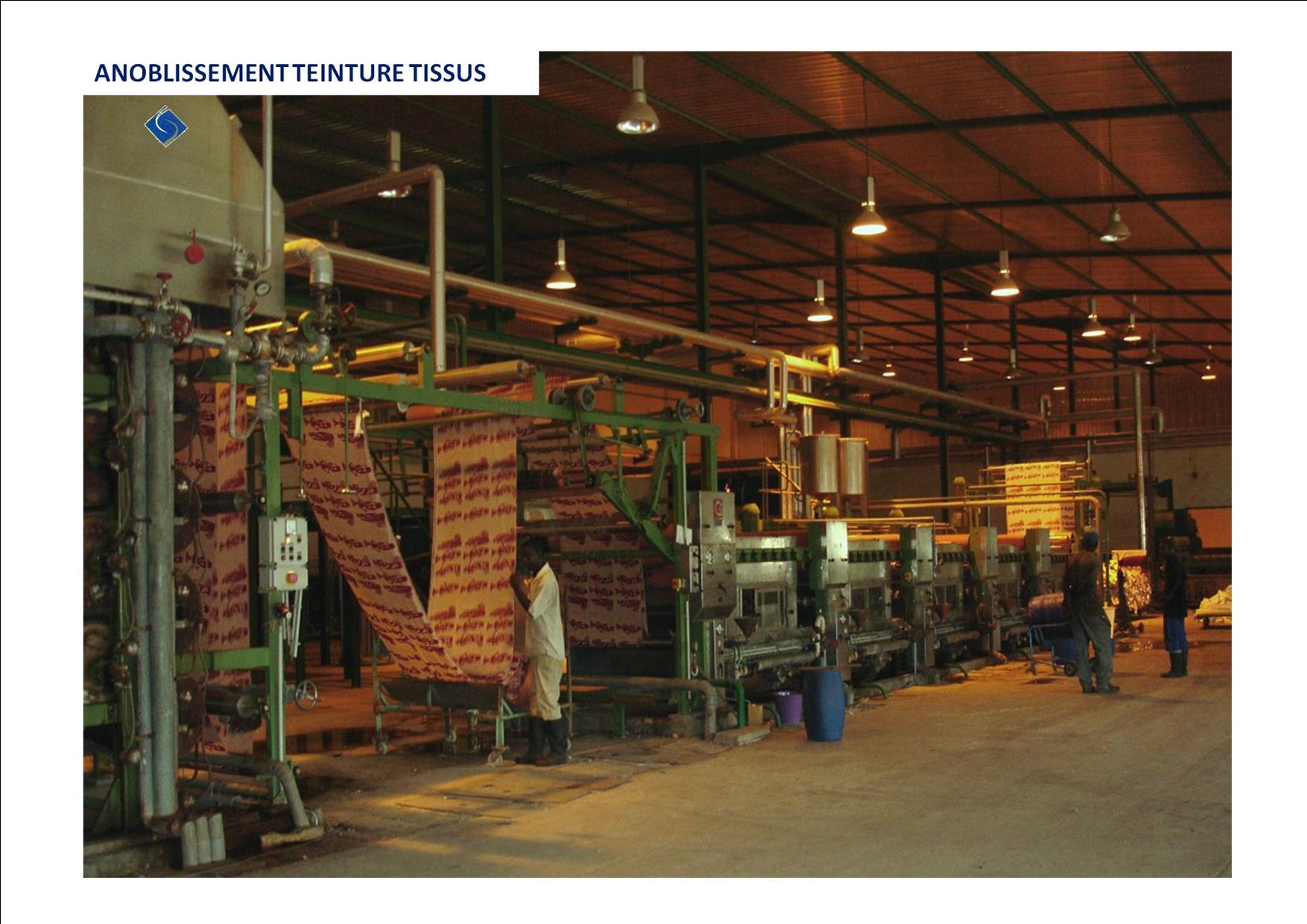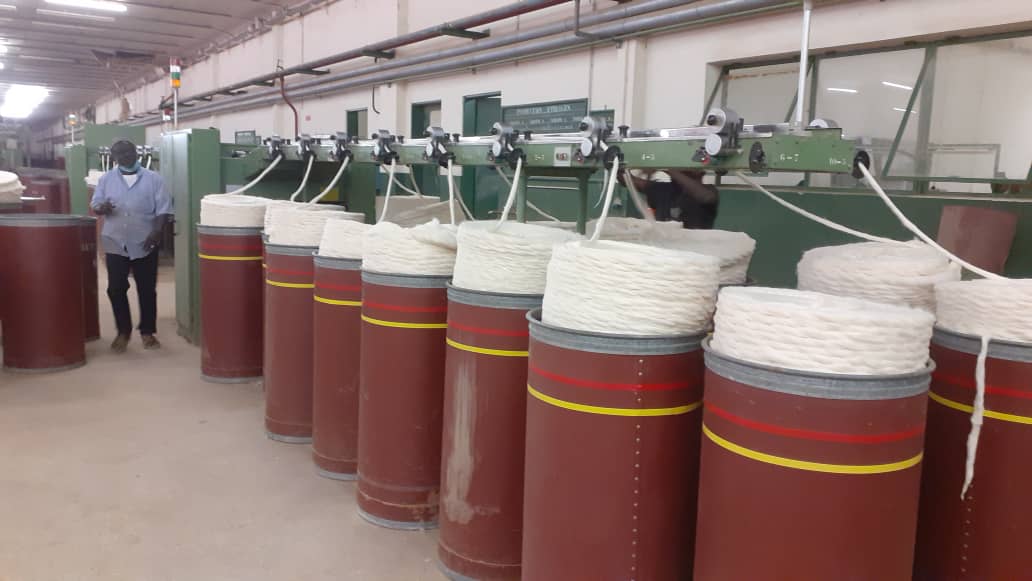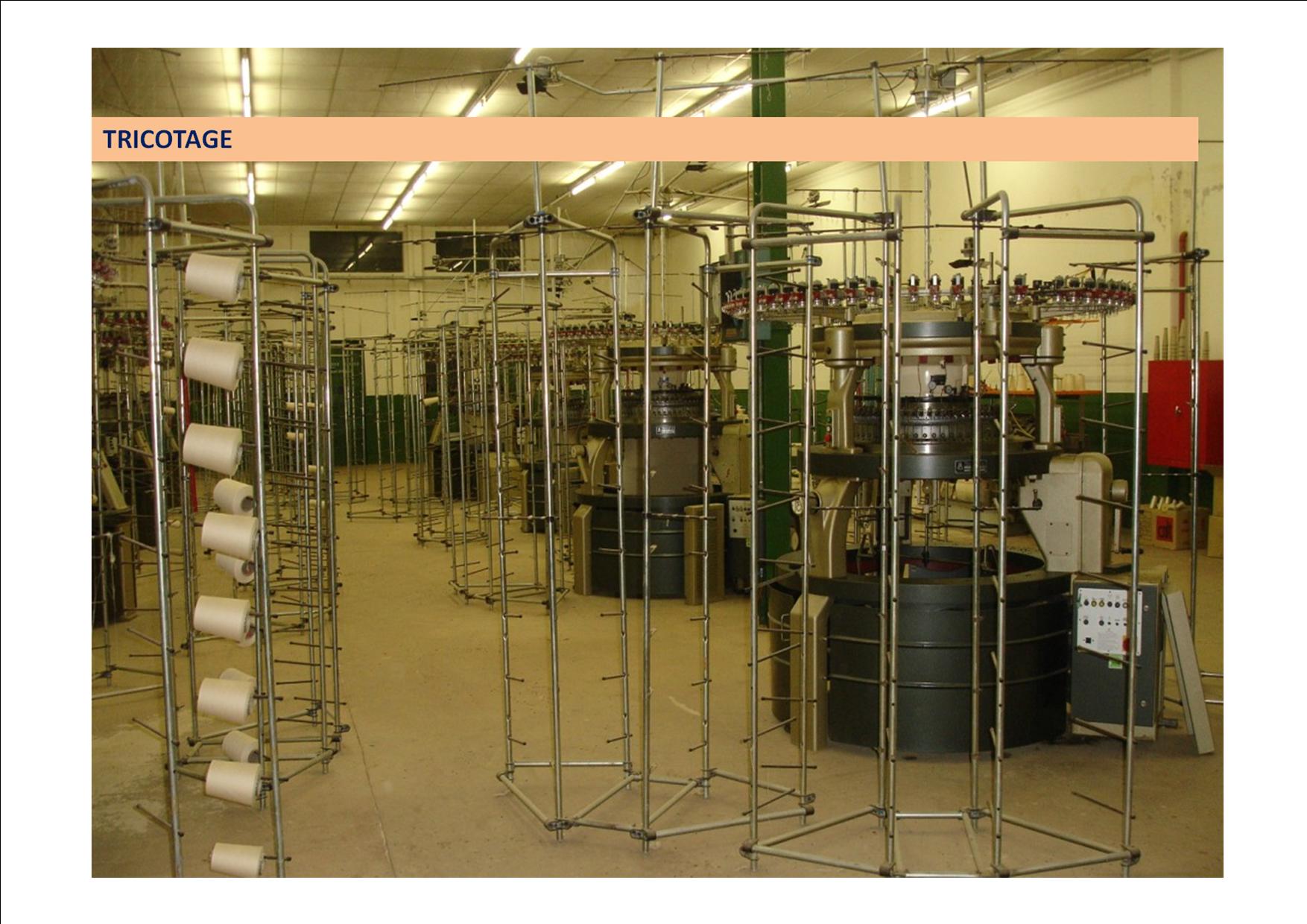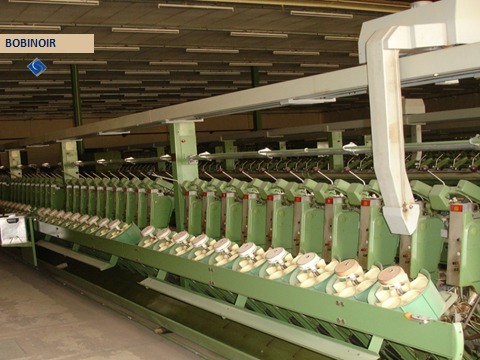Interview with Mr Samba Dia, SupplyChain and Logistic Manager / Domitexka
DOMITEXKA is the leader in the distribution of the dyed fibranne product intended for the Tuaregs in the sub-region of Mauritania, Mali, Niger, Morocco and Algeria and plans to export more than 5,000,000 metres of this product alone in this market by 2023.
Please let us know more details about Domitexka Senegal, its history and its success story.
DOMITEXKA-SALOUM (Domaine Industrielle Textile de Kaolack-Saloum) is a textile company created after the closure of SOTIBA, the largest textile factory in West Africa. The factory is located in the area of the former SOTEXKA. The speciality is Spinning / Weaving / Knitting / Printing / Dyeing.
DOMITEXKA believes in the rebirth of the textile sector with its new innovations for the strong demand and requirement of the quality of the customers and especially the accent on the 100% natural cotton and the organic cotton as well as the natural fibers of our local resources.
DOMITEXKA will make its textile factory the most modern and competitive in West Africa.
To achieve our goal, we are using and maximising all the specific assets of the Kaolack region at the industrial site for the African textile market.
Exceptional energy competitiveness thanks to the local biomass of the Kaolack region (groundnut shell);
Quality technical know-how that has existed for years
Benefiting from the renowned brand (ex SOTIBA), immense collections that are unique in the world, creativity and cultural symbiosis with the market;
A fair and profitable chain, fed by local fair trade cotton collected by Senegalese cotton growers from which DOMITEXKA uses its spinning, weaving, knitting, dyeing and printing line to make a 100% Senegalese fabric
Which kind of services and products offer to your clients?
- Production of single yarn
- Twisted yarn
- Ribbed and stockinette knitting
- Large-scale dyeing
- Specialized printing of African models
Our equipment:
- 20 hectares of the industrial site;
- 30,000m² of industrial hangars – new condition;
- 20 billion FCFA of modern and efficient industrial production tools;
- Capacity 2000 tons/year of treated cotton;
- Textile production: 20 million metres of fabric per year;
- 2 deep artesian wells – capacity 500m3/hour;
- Waste water treatment
Targeted jobs:
- 2000 permanent jobs;
- 1000 indirect jobs.
Implication on the :
- Senegalese textile market of 400 billion FCFA/year;
- Regional textile export market of 2500 billion FCFA/year.

As an Expert how do you evaluate the textile and fashion industry in Senegal?
The Senegalese textile industry was more attractive in the 80s, 90s but the unfair competition of Asian products have slowed down the great breakthrough of Senegalese textile but For now ten years it has begun to move especially in the field of fashion and clothing.
according to research by Texprocil association Strengths, Weaknesses, Opportunities and Threats of the textile and garment sector in Senegal are:
Strengths
– Abundant and cheap labour, very close to export markets, and has a dynamic diaspora that can serve as a relay in most developed countries
– Local production of quality cotton
– Highly profitable cotton prices to farmers, which could lead to a considerable increase in cotton in 2018.
– Implementation of crop insurance against rainfall deficit. This is great support given by the State to cotton farmers.
– Cotton is one of Senegal’s “top 10” export products: an opportunity for players in the textile industry.
– The sector has a good production capacity. For example, SODEFITEX has 5 ginning plants capable of producing 65,000 tons of carefully packaged fibre.
Weaknesses
– Downward trend in labour productivity: In Senegal, while labour productivity almost halved between 1974 and 2003, it
was almost divided by 3 for textiles and clothing
– Old age/lack of production equipment in the sector
– Few training structures that can support the needs of the sector
– High cost of production factors
– Low / No access to electricity in some areas as well as high frequency of power cuts
– Groundnut prices are often more profitable, leading to a drop in cotton sown areas (groundnut is well remunerated because of the intervention of Chinese traders in Senegal).
– Regular diversion of input subsidies: inputs are bought back from producers to be sold in countries bordering the cotton zone. This is illegal trafficking at the expense of cotton cultivation.
– It is necessary, under the rain, between 800 and 1 200 mm, so that the cotton plant satisfies correctly its needs in water, which limits the area of predilection of this plant in Senegal.

Opportunities
– Regional markets offer interesting opportunities because of trade agreements, transport networks and the relative ease of identifying cultural tastes.
– Erratic variations in bilateral exchange rates compared to competing countries
– Geographic proximity, commercial opportunities offered under the AGOA and regional markets of UEMOA and ECOWAS, in addition to a long tradition in textile/ clothing
– Support from the authorities through the Senegal Emergent Plan (PSE) which aims at developing the industrial sector
– Great possibility of cotton supply in the countries of the sub-region.
Threats
– Asian and especially Chinese competition
– Competitiveness with other pay in the sub-regions, especially Burkina Faso
– The ecological and socio-economic impact

In recent years African fabric designs and traditional cloth are so popular and trendy in Europe and US, What is the main reasons?
The main reasons for the breakthrough of African fabrics in the world and especially in the United States are due to the quality and rarity of the creations as well as the almost 100% cotton and natural fabrics produced.
Tell us more about the specifications and characteristics of Senegal Fabric and cloth in terms of color design, and quality ….
The Senegalese fabric is based mainly on the quality of 100% cotton and also organic 30×30 or 40×40 printed with designs typically African traditional nature whose colors reflect the nature, the female daily life with a standard quality (Legos, Wax, Sosso and art)
How do you evaluate the future of textile industry in Senegal despite of all political and economical issues?
Despite all the problems that the Senegalese textile industry is facing, the future is promising with the new orientation of DOMITEXKA as well as other actors of the textile industry to make a 100% Senegalese product which from the cultivation of cotton through spinning, weaving and knitting to printing is made in Senegal which will strengthen the value chain and also increase the employment of youth in this sector.
This will also strengthen the will of our state authorities to strengthen these textile companies by lightening the tax burden and others.

How was Coronavirus pandemic affected Senegal’s textile industry and Senegal’s Economy in general?
During the CoronaVirus pandemic, all the industrial layers were affected, which did not spare the textile sector, but DOMITEXKA was able to find a way not to put its employees out of work, while targeting niches that made this period manageable despite the increase in product costs.
Africa can be a global textile hub, what is main obstacles and challenges for developing the textile industry Africa ?
Africa is now unavoidable especially for the installation of industrial textile units because the demand is too strong and the African population is growing in a way that the needs in clothing can be solved only if the textile industrialization is done on the spot and the only challenge that can solve it is the cultivation of cotton and textile fibres in our countries.
How many textile producers are active in Senegal ? in which sectors of textile industry Senegal is more powerful? Any statistics about textile import or export?
There are more than thirty professionals who are active in the Senegalese textile industry, especially in the clothing and fashion industry but the biggest complete textile industry is DOMITEXKA with all its activities concerning the textile and also SODEFITEX which is a Senegalese company specialized in the production of certified cotton and which is our main supplier.
DOMITEXKA makes 80% in export of its finished product towards the bordering countries.
The import of Senegalese textile is around 90% when it should be reversed.
Africa is main destination for second-hand cloth, how it can affect the textile industry in an African country? and what is the solution in your point of view?
Import of second-hand clothes is a brake on the development of the Senegalese textile industry and that could put in bankruptcy several textile companies and only our states can take decisions by consent the taxes on the imports to put to the African textile companies to sell their products in fair competition that will reduce certainly the rate of import of the second-hand clothes according to our researches the Africans want more of new clothes that of second hands but the policy of our governors must be revised for the textile sector.
Recently Domitexka planned to new investments in textile digital printing, could you please let me know how you evaluate digital printing’s future in the Africa and world? and what are the reasons that you want to invest in this sector?
DOMITEXKA is developing new products for the local Senegalese and sub-regional market. These products are dyed voile, dyed cotton as well as dyed basin and printed fabric.
It is with the new technology of digital printing that this innovation will be accentuated to solve this demand which does not cease increasing.
The new digital technology will reduce energy costs and decrease environmental pollution with the cheaper treatment of wastewater from chemical auxiliaries.
Digital textile printing has come at a time when the world needs a healthy environment with a reduction in energy, chemical and water costs of 85%. Achieving quality printing on all types of fabrics with certified standards will boost African Print to world renown.






















